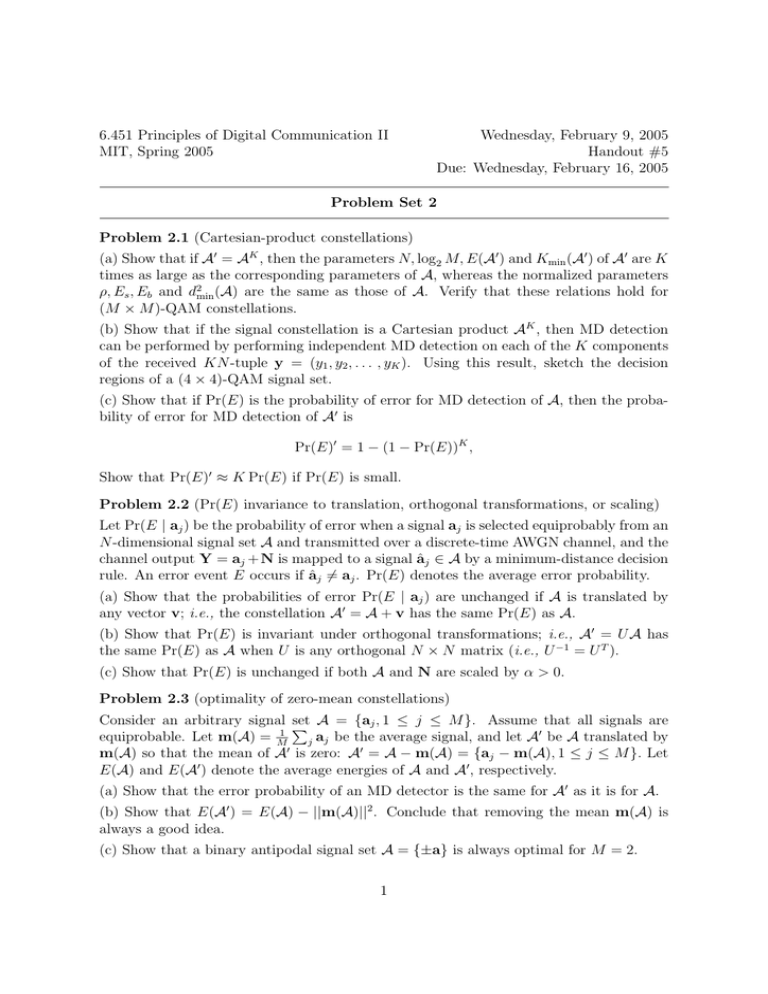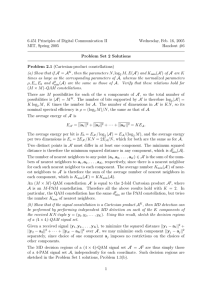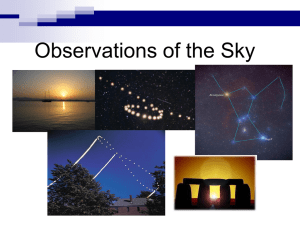6.451 Wednesday, MIT, Handout
advertisement

6.451 Principles of Digital Communication II
MIT, Spring 2005
Wednesday, February 9, 2005
Handout #5
Due: Wednesday, February 16, 2005
Problem Set 2
Problem 2.1 (Cartesian-product constellations)
(a) Show that if A = AK , then the parameters N, log2 M, E(A ) and Kmin (A ) of A are K
times as large as the corresponding parameters of A, whereas the normalized parameters
ρ, Es , Eb and d2min (A) are the same as those of A. Verify that these relations hold for
(M × M )-QAM constellations.
(b) Show that if the signal constellation is a Cartesian product AK , then MD detection
can be performed by performing independent MD detection on each of the K components
of the received KN -tuple y = (y1 , y2 , . . . , yK ). Using this result, sketch the decision
regions of a (4 × 4)-QAM signal set.
(c) Show that if Pr(E) is the probability of error for MD detection of A, then the probability of error for MD detection of A is
Pr(E) = 1 − (1 − Pr(E))K ,
Show that Pr(E) ≈ K Pr(E) if Pr(E) is small.
Problem 2.2 (Pr(E) invariance to translation, orthogonal transformations, or scaling)
Let Pr(E | aj ) be the probability of error when a signal aj is selected equiprobably from an
N -dimensional signal set A and transmitted over a discrete-time AWGN channel, and the
channel output Y = aj + N is mapped to a signal âj ∈ A by a minimum-distance decision
rule. An error event E occurs if âj =
aj . Pr(E) denotes the average error probability.
(a) Show that the probabilities of error Pr(E | aj ) are unchanged if A is translated by
any vector v; i.e., the constellation A = A + v has the same Pr(E) as A.
(b) Show that Pr(E) is invariant under orthogonal transformations; i.e., A = U A has
the same Pr(E) as A when U is any orthogonal N × N matrix (i.e., U −1 = U T ).
(c) Show that Pr(E) is unchanged if both A and N are scaled by α > 0.
Problem 2.3 (optimality of zero-mean constellations)
Consider an arbitrary signal �
set A = {aj , 1 ≤ j ≤ M }. Assume that all signals are
1
equiprobable. Let m(A) = M j aj be the average signal, and let A be A translated by
m(A) so that the mean of A is zero: A = A − m(A) = {aj − m(A), 1 ≤ j ≤ M }. Let
E(A) and E(A ) denote the average energies of A and A , respectively.
(a) Show that the error probability of an MD detector is the same for A as it is for A.
(b) Show that E(A ) = E(A) − ||m(A)||2 . Conclude that removing the mean m(A) is
always a good idea.
(c) Show that a binary antipodal signal set A = {±a} is always optimal for M = 2.
1
Problem 2.4 (Non-equiprobable signals).
Let aj and aj � be two signals that are not equiprobable. Find the optimum (MPE) pairwise
decision rule and pairwise error probability Pr{aj → aj � }.
Problem 2.5 (UBE for M -PAM constellations).
For an M -PAM constellation A, show that Kmin (A) = 2(M − 1)/M . Conclude that the
union bound estimate of Pr(E) is �
� � �
M −1
d
Pr(E) ≈ 2
Q
.
M
2σ
Observe that in this case the union bound estimate is exact. Explain why.
2











